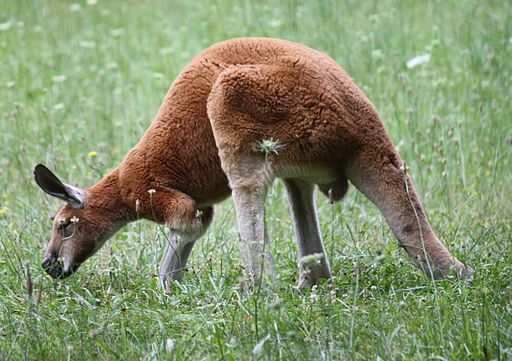Swedish carmaker Volvo tests collision-avoidance system for kangaroos
Volvo has made safety a priority since the company produced its first car in 1927. Though that focus sometimes seems like Nordic high-mindedness, it’s grounded in something more pedestrian — the fact that in Volvo’s home country of Sweden, many of the pedestrians are moose.
_01-640x301.jpg) 1989 Volvo 240 GL station wagon
1989 Volvo 240 GL station wagon
The cars’ ability to protect passengers in ruminant-based collisions has made them popular where antlers and ice are in abundance. But company engineers are now taking a more antipodean approach, heading to Australia to develop avoidance strategies for kangaroo.
This isn’t just about the unpleasantness of roadkill wallaby. More than 20,000 kangaroo-caused incidents happen in Australia each year, doing more than 55 million dollars in damages and causing numerous fatalities and serious injuries. In fact, the Australian marsupial is responsible for more deaths each year than sharks, crocodiles or box jellyfish.
An adult red kangaroo can weigh 90kg, and while that’s hardly elk-like, they can travel at speeds of more than 60 kilometres per hour, erratically bounding over 7 metres in a single leap. That’s like trying to avoid a fully-grown man, running as fast as a car can go within a city’s speed limits and being able to jump over 4 adults as tall as he is!
That’s simply too fast for humans to react to, so Volvo is evolving its City Safety research to make outback driveabouts a bit safer. Cameras and radar are being trained to detect kangaroos — much like they detect cars, cyclists, pedestrians, and golden retrievers elsewhere — and prime the brakes in milliseconds, readying the car for a quick stop.
 A typical kangaroo sign in the Australian outback
A typical kangaroo sign in the Australian outback
If the driver doesn’t react to the danger, the car will warn the driver and brake hard to avoid the collision. Total reaction time from kangaroo detection drops from 1.2 seconds (human) to 0.05 seconds (Volvo). The driver will find this sudden stop surprising, certainly, though perhaps less surprising than a windshield full of kangaroo.
 A wallaby. similar to the kangaroo but smaller
A wallaby. similar to the kangaroo but smaller
The market for kangaroo-avoidance technology is limited, surely, but the situation is a wonderful testing scenario to help Volvo reach its goal that no one will be killed or seriously injured in a new Volvo car by 2020. So maybe it makes sense to practice on kangaroos!
(All images - credit: Wikimedia Commons under Creative Commons licence)







